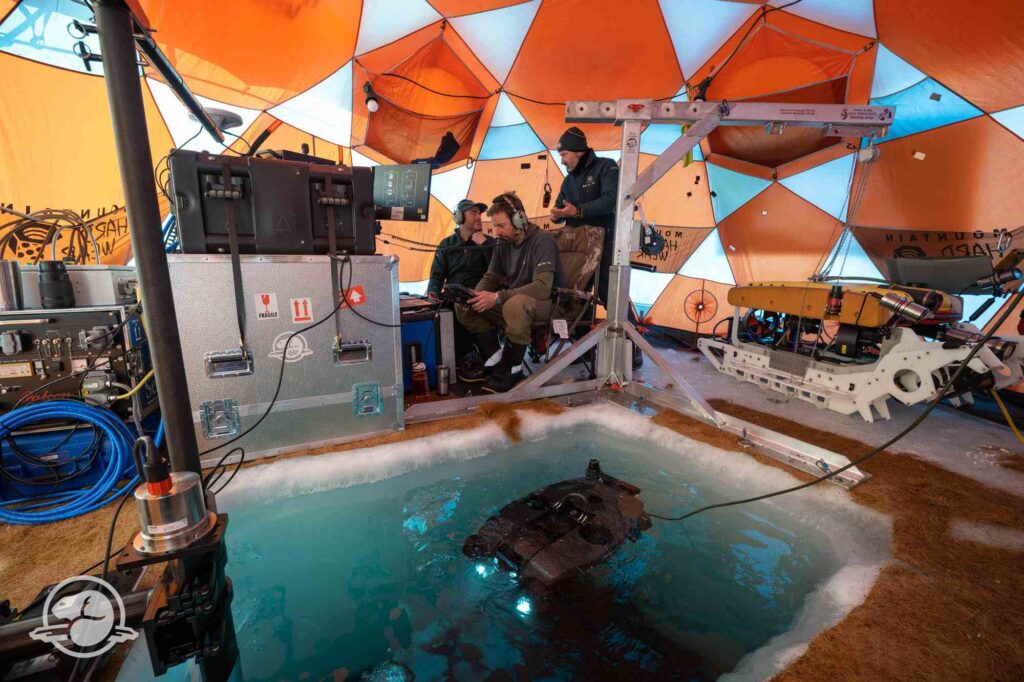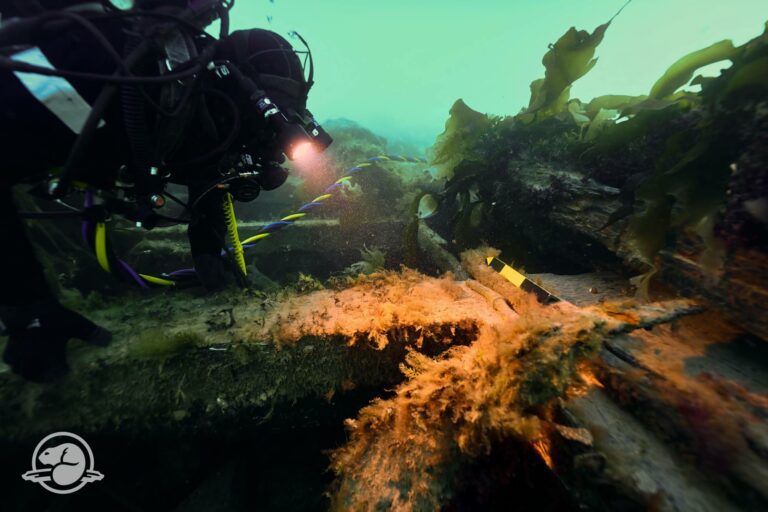A total of 275 artefacts have been recovered from Sir John Franklin’s ship HMS Erebus, which sank off Prince William Island in Nanavut, Canada in 1845. Government agency Parks Canada and the Inuit people of Gjoa Haven resumed their joint research on what is regarded as among the best-preserved wooden wrecks in the world in 2022 and have now reported on what they achieved.
The newly discovered artefacts are reported to include navigational implements, paper and a quill pen inside an embossed leather book cover, plates and dishes from the steward’s pantry, eyeglass lenses and an officer’s epaulettes.
HMS Erebus and Terror had sailed from England under Sir John Franklin in search of the fabled North-west Passage. Divernet last reported on the excavations at what is designated the Wrecks of HMS Erebus and HMS Terror National Historic Site in 2019, before a 2.5-year hiatus caused by the coronavirus pandemic.

Parks Canada Underwater Archaeology Team's work is carried out in conjunction with the Nattilik Heritage Society’s Inuit Guardians from Gjoa Haven. In April and May this year they succeeded in navigating an ROV under the ice at the site to check on the condition of Erebus and collect new imagery and survey data. The wreck was found to have undergone physical changes, probably the result of storm wave action.
Then in September the underwater archaeologists were able to scuba dive on the wreck. Fifty-six dives were carried out over 11 days from the research vessel David Thompson and support barge Qiniqtirjuaq. The archaeologists began excavating what they believe could be the second lieutenant’s cabin, continued work on what they think is the third lieutenant’s cabin, and completed excavation of part of the captain’s steward’s pantry.
The HMS Terror wreck was not visited in 2022 because of what Parks Canada describes as “timing and logistical constraints” but says that “the fieldwork further advances our understanding of the evolving story of the 1845 Franklin Expedition”.

“Inuit oral history led to the discovery of the wrecks of HMS Erebus and HMS Terror and its legacy is being respected through the preservation of the co-owned artefacts that help tell the story of the 1845 Franklin Expedition,” said Fred Pedersen, chair of the Franklin Interim Advisory Committee.
“Inuit continue to be part of the story through collaboration and co-operation, much like the support the Guardians Program provides, ensuring the protection and presentation of the national historic site.”
In August 2019, Parks Canada released video footage of HMS Terror as part of what it has described as one of the largest, most complex underwater archaeological undertakings in Canadian history. Details of previous explorations of the wrecks can be seen on its website, along with previous artefact recoveries.


Amazingly interesting work it make me feel the same fascinating Way as when i was a kid and fallow the discovery and work of Jacques Cousteau! Tanks for the pictures it was my deepest Dreams of going under water with a ROV and find à piece of history.